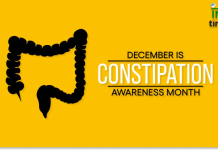
World Spine Day is observed annually on October 16th as part of the Bone and Joint Decade Action Week. It is a global initiative aimed at raising awareness about spinal disorders, promoting spinal health, and encouraging the prevention of back pain and related issues. As the backbone of our body, the spine plays a critical role in our overall well-being. It provides structural support, facilitates movement, and protects the spinal cord, which is essential for transmitting messages between the brain and the rest of the body.
Spinal health is often overlooked, but its importance cannot be overstated. Back pain and spinal disorders are among the leading causes of disability worldwide, affecting millions of people every year. World Spine Day serves as a reminder for individuals, healthcare professionals, and governments to take proactive steps to address spinal health, prevent injuries, and promote a healthier lifestyle.
This article will explore the significance of World Spine Day, the common causes of spinal disorders, prevention strategies, and the importance of promoting spinal health globally.
The Importance of World Spine Day
World Spine Day plays a crucial role in drawing attention to the growing global issue of spinal disorders. Back pain is one of the most common musculoskeletal conditions, and it affects people of all ages, occupations, and lifestyles. According to the World Health Organization (WHO), back pain is the leading cause of disability in many countries, and its impact on quality of life and economic productivity is profound.
The theme for World Spine Day 2024 is “Move Your Spine,” emphasizing the importance of movement in maintaining spinal health. Physical inactivity, poor posture, and sedentary lifestyles have become significant contributors to spinal problems in modern society. World Spine Day encourages people to stay active, adopt proper ergonomic practices, and seek medical attention when necessary.
By promoting awareness, World Spine Day helps reduce the stigma associated with back pain and encourages early diagnosis and treatment. It also highlights the role of healthcare professionals, such as chiropractors, physiotherapists, and orthopedic surgeons, in managing and preventing spinal disorders.
Common Spinal Disorders
The spine is a complex structure made up of bones (vertebrae), discs, muscles, ligaments, and nerves. When any part of this system is damaged or affected, it can lead to various spinal disorders. Some of the most common spinal conditions include:
1. Low Back Pain
Low back pain is one of the most prevalent spinal issues, affecting millions of people worldwide. It can result from poor posture, muscle strain, disc degeneration, or injury. Low back pain can be acute (short-term) or chronic (long-term), and it often interferes with daily activities and work productivity.
2. Herniated Disc
A herniated disc occurs when the soft inner material of a spinal disc protrudes through its outer layer, pressing on nearby nerves. This can cause pain, numbness, and weakness in the affected area, often in the lower back or neck. Herniated discs are commonly caused by aging, injury, or improper lifting techniques.
3. Spinal Stenosis
Spinal stenosis is the narrowing of the spinal canal, which puts pressure on the spinal cord and nerves. This condition can cause pain, tingling, and weakness in the legs or arms. Spinal stenosis is often associated with aging and degenerative changes in the spine.
4. Scoliosis
Scoliosis is a condition where the spine curves abnormally to the side. It usually develops during adolescence and can range from mild to severe. Severe scoliosis can cause discomfort, breathing difficulties, and impaired mobility.
5. Osteoporosis
Osteoporosis is a condition that weakens the bones, making them more prone to fractures. When it affects the spine, it can lead to vertebral fractures, causing pain and a hunched posture. Osteoporosis is more common in older adults, especially postmenopausal women.
6. Sciatica
Sciatica is a condition characterized by pain that radiates along the path of the sciatic nerve, which runs from the lower back down the legs. It is usually caused by compression of the nerve due to a herniated disc or spinal stenosis. Sciatica can lead to severe discomfort and reduced mobility.
Risk Factors for Spinal Disorders
Several factors can increase the risk of developing spinal disorders, including:
1. Sedentary Lifestyle
Lack of physical activity weakens the muscles that support the spine, leading to poor posture and an increased risk of injury. Sitting for prolonged periods, especially with poor posture, can strain the spine and contribute to back pain.
2. Poor Ergonomics
Improper workstation setups, incorrect lifting techniques, and inadequate support while sitting or sleeping can place unnecessary stress on the spine. Ergonomics plays a crucial role in maintaining spinal health, especially for individuals who work in desk jobs.
3. Obesity
Excess weight places additional stress on the spine, especially the lower back. This can lead to disc degeneration, joint pain, and an increased risk of spinal injuries.
4. Aging
As we age, the spine undergoes degenerative changes, such as disc wear and tear, loss of bone density, and reduced flexibility. These changes increase the likelihood of developing spinal disorders such as osteoarthritis, spinal stenosis, and osteoporosis.
5. Smoking
Smoking can reduce blood flow to the spine, leading to disc degeneration and delayed healing of spinal injuries. Smokers are more likely to experience chronic back pain compared to non-smokers.
Prevention and Management of Spinal Disorders
Maintaining good spinal health requires a proactive approach that includes lifestyle changes, physical activity, and proper medical care. Here are some strategies for preventing and managing spinal disorders:
1. Stay Active
Regular physical activity is essential for keeping the spine healthy and preventing back pain. Activities such as walking, swimming, yoga, and Pilates help strengthen the core muscles that support the spine. Stretching exercises can improve flexibility and reduce muscle tension.
2. Practice Good Posture
Maintaining proper posture while sitting, standing, and walking reduces strain on the spine and prevents muscle imbalances. When sitting at a desk, it is important to keep the back straight, feet flat on the floor, and the screen at eye level.
3. Use Ergonomic Furniture
Ergonomic chairs, standing desks, and supportive mattresses can help reduce the risk of spinal problems. Proper ergonomic setups ensure that the spine is in a neutral position, minimizing the risk of strain and injury.
4. Maintain a Healthy Weight
Maintaining a healthy weight reduces the stress on the spine and lowers the risk of developing conditions such as herniated discs and osteoarthritis. A balanced diet rich in calcium and vitamin D supports bone health.
5. Quit Smoking
Smoking negatively impacts spinal health by reducing blood flow to the spine and accelerating the degeneration of spinal discs. Quitting smoking improves overall health and reduces the risk of chronic back pain.
6. Lift Objects Properly
When lifting heavy objects, it is important to use proper techniques to avoid straining the back. Always bend the knees and lift with the legs rather than the back. Avoid twisting the spine while lifting, and seek assistance for heavier loads.
7. Seek Medical Attention
If you experience persistent back pain or symptoms of a spinal disorder, it is important to seek medical attention promptly. Early diagnosis and treatment can prevent the condition from worsening and improve outcomes. Healthcare professionals, such as physiotherapists, chiropractors, and orthopedic specialists, can provide personalized treatment plans to manage spinal disorders.
Global Impact of Spinal Disorders
Spinal disorders have a significant impact on individuals, healthcare systems, and economies worldwide. According to the Global Burden of Disease Study, low back pain is the leading cause of years lived with disability in most countries. In addition to the physical pain and discomfort, spinal disorders can affect mental health, leading to anxiety, depression, and a reduced quality of life.
The economic burden of spinal disorders is also substantial, with healthcare costs, lost productivity, and disability-related expenses contributing to the overall impact. Employers and governments are increasingly recognizing the importance of addressing spinal health in the workplace and promoting wellness programs to reduce the risk of spinal injuries.
The Role of Healthcare Professionals
Healthcare professionals play a vital role in preventing, diagnosing, and managing spinal disorders. Chiropractors, physiotherapists, and orthopedic surgeons are often the first line of defense for individuals experiencing back pain or spinal issues. They provide treatments such as manual therapy, exercise programs, and surgical interventions when necessary.
Additionally, public health campaigns led by healthcare organizations can help raise awareness about the importance of spinal health. World Spine Day is an opportunity for healthcare professionals to educate the public about the benefits of physical activity, proper posture, and early intervention in preventing spinal disorders.
Conclusion
World Spine Day serves as a crucial reminder of the importance of spinal health and the need to take proactive steps in preventing spinal disorders. With millions of people affected by back pain and related conditions each year, raising awareness about spinal health is more important than ever.
By promoting physical activity, good posture, and proper ergonomic practices, individuals can reduce their risk of developing spinal disorders and improve their overall well-being. On World Spine Day and beyond, let us all commit to moving our spines and taking care of this essential part of our bodies.




































toobit exchange